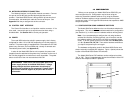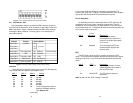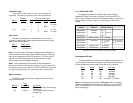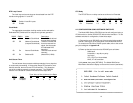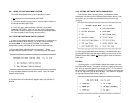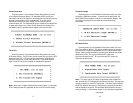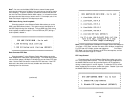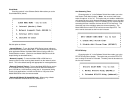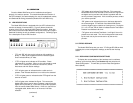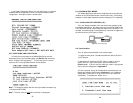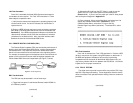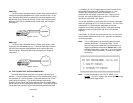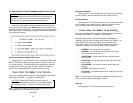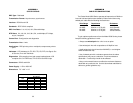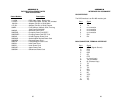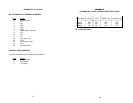
33 34
APPENDIX A
SPECIFICATIONS
DDS Type: Dedicated
Transmission Format: Asynchronous, synchronous
Interface: RS-232 and V.35
Standards: AT&T 62310 compliant
DDS Line Rates: 2.4, 4.8, 9.6, 19.2, 56 and 64 kbps
DTE Rates: 2.4, 4.8, 9.6, 19.2, 38.4, 56, and 64 kbps; 57.6 kbps,
async, 2 stop bits
Control Port: Configuration and diagnostics
Transmission Line: 4-wire
Applications: DDS point-to-point or multipoint; campus-area point-to-
point
Indicators: LED indicators for TD, RD, CTS, CD, DTR, No Signal, Out-
of-Service, Error and Test Mode
Diagnostics: V.54 compliant local and remote loopback tests; V.52
compliant 511/511E BER test, TELCO CSU and DSU loops
Connectors: DB-25 and M/34
Power Supply: 115V or 230V AC
Dimensions: 7.3” x 6.6” x 1.6”
APPENDIX B
CABLE RECOMMENDATIONS
The Patton Model 2500 Series operates at frequencies of 20kHz or
less and has been performance tested by Patton technicians using
twisted-pair cable with the following characteristics:
Wire Gauge Capacitance Resistance
19 AWG 83nf/mi or 15.72 pf/ft. .0163 Ohms/ft.
22 AWG 83nf/mi or 15.72 pf/ft. .0326 Ohms/ft.
24 AWG 83nf/mi or 15.72 pf/ft. .05165 Ohms/ft.
To gain optimum performance from the Model 2500 Series, please
keep the following guidelines in mind:
• Always use twisted pair wire—this is not an option.
• Use twisted pair wire with a capacitance of 20pf/ft or less.
• Avoid twisted pair wire thinner than 26 AWG (i.e. avoid higher
AWG numbers than 26)
• Use of twisted pair with a resistance greater than the above
specifications may cause a reduction in maximum distance
obtainable. Functionality should not be affected.
• Many environmental factors can affect the maximum distances
obtainable at a particular site. Use the above data rate/distance
table as a general guideline only.
Data
Rate
64 Kbps 7.1 4.9 3.4
56 Kbps 7.6 5.2 3.6
19.2 Kbps 8.7 6.2 4.5
9600 bps 10.4 7.7 5.8
4800 bps 13.7 10.6 9.7
2400 bps 15.1 14.2 9.1
Model 2500 Series Distance Table (miles)
Wire Gauge
22 24 26



